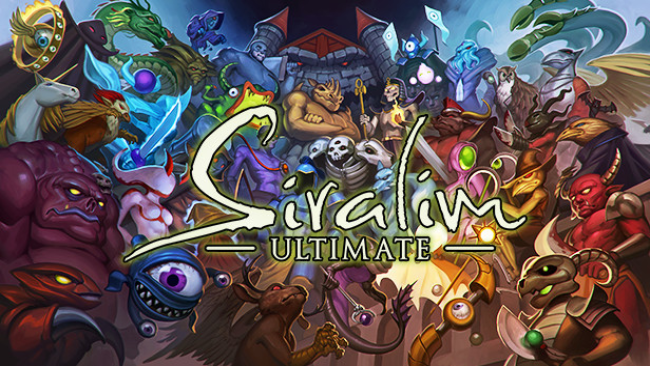

- Siralim ultimate discord for free#
- Siralim ultimate discord pro#
- Siralim ultimate discord software#
- Siralim ultimate discord code#
This guide should be read in its entirety, from start to finish, as it outlines an entire process that is very much worth exploring in its fullest. Please bear in mind that nobody’s perfect, and everyone has their own processes: this is just one of many methods that can lead to your new favourite way to play.
Siralim ultimate discord pro#
As a result, I think I’m qualified enough to be able to at least give a decent overview of the basics of building without being too bogged down in pro mentality. The list of specializations and perks is from the guide on Steam.I’ve been playing this game for about 1000 hours, and 200 of those hours are either being AFK or having the game up while theorycrafting stupid builds. This tool is not affiliated with Thylacine Studios.Ĭreature sprites, creature stats and the mapping between trait -> creature sprite are sourced from the Siralim Ultimate API. If you have any other comments/feedback feel free to message me on Discord - BeratedBert#6292. Please feel free to fork the repository and/or submit pull requests/issues etc.
Siralim ultimate discord software#
The software is licensed under the open source GNU GPL 3.0 License. If anybody knows a database that maps monster names to their respective sprites, please let me know!
Siralim ultimate discord code#
Siralim ultimate discord for free#
This would mean I could no longer host it for free on GitHub pages, and would need to think about security, maintenance etc. The only way to achieve this would be to have a back end app, such as a Flask app, that could encode a build into a short URL (like how Grimtools does it). Such as artifact stats, nether stone traits, etc, but this is simply not possible without causing the build string to grow to ridiculous lengths.

I would like to add other things to the app TODOĪt this stage I've pretty much reached the limit of what I can do with a pure front-end app. The relic codes are two characters, corresponding to the 6th and 13th character of the relic's name, after removing any non-alphabetical characters (because those two particular characters did not have any collisions). I don't think the order of the perks within a specialization will ever change but if they do, it will only be a minor the first perk in Bloodmage, "Bleed Out", has the anointment code BMA, the second perk "Blood Clot" has BMB, and so on. That the perk belongs to, and the third letter is a letter representing the index of the perk within the list of that specialization's The first two characters is the specialization code The anointment codes are three-character representation of a particular perk. For a list of them, see data/steam-guide/specializations.csv. The specialization code string is much simpler - it is a two-character identifier for a specialization. The name of its trait changes at some point. Iron Golem just happens to be ef5667 and will always be ef5667 unless its family, creature or String that represents each monster, e.g. I chose a hash length of 6 (in order to minimise potential collisions). This should be more robust as the family, creature and traits don't So instead I decided to take the hash of the family + creature + trait. Then any builds loaded from previous versions of the Compendium would break. If a creature was added before creature 123, for example, But this would cause problems later down the line when new creatures are added.


 0 kommentar(er)
0 kommentar(er)
